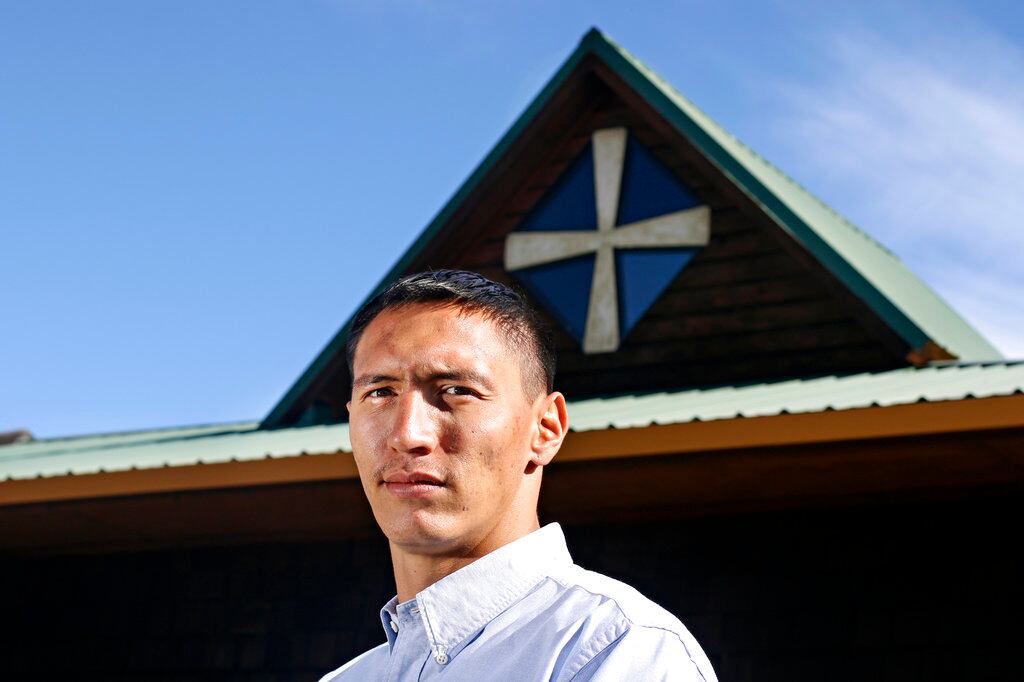KALISPELL, Mont. — Charting Jesse DesRosier’s 28-year journey is a dizzying endeavor, even if he’s right back where he started — living on the Blackfeet Indian Reservation, a community that at once seems tucked away and exposed, situated on an ecological nexus where rolling, wind-whipped foothills meet the jagged expanse of the Rocky Mountain Front and the birthplace of the Blackfeet creation story.
DesRosier’s connection to his homeland runs deep, and he’s dedicated most of his adult life to mounting a full-throated defense of his country, his culture, his community, and his heritage.
It is, he says, the Blackfeet way. But it’s a way that was almost lost and forgotten.
As a Pikuni (or Blackfeet) warrior and veteran of the United States Marines Corps, DesRosier believes it is his duty and obligation to protect his country and lands, as well as to uphold the tribe’s traditions and culture while safeguarding its natural resources for future generations.
“We’ve been serving this country since before it was a country,” DesRosier, a fourth-generation veteran of the U.S. Armed Services, said. “We’ve had a warrior culture that served this country since time immemorial. For thousands of years my people defended our territory, battling disease, starvation, genocide, and forced colonization. That warrior culture still exists today.”
Despite the oppression experienced by Native Americans at the hands of U.S. forces, the desire to serve their country as honored warriors remains a strong current running through the culture, DesRosier said.
Today, Native Americans serve in the U.S. military at the highest rate per capita of any ethnic or cultural population, and Montana is home to more than 6,000 tribal veterans, many of them Blackfeet.
“You can’t throw a rock on this reservation without hitting a veteran,” DesRosier said. “We’re everywhere.”
Stationed in the Pacific, DesRosier returned from overseas in 2011, and has since obtained degrees in anthropology and Native American studies from the University of Montana. He is now teaching at the same Blackfoot-language immersion school he and his brother, also a veteran, attended nearly 20 years ago — the Cuts Wood School, a program under the Piegan Institute, the brainchild of the late Darrell Kipp, whose son Darren now runs the school.
It’s an unlikely feat in its own right given that, 30 years ago, the traditional Siksika language appeared on the cusp of extinction, due to a legacy of cultural erosion born of oppression, assimilating native people into English-speaking society, and the systematic stigmatization of Native American culture.
A 1985 survey of Blackfeet members showed that essentially no one on the reservation under the age of 50 actively spoke Blackfoot, a “crucial thread” to maintaining the tribe’s uniqueness, DesRosier said.
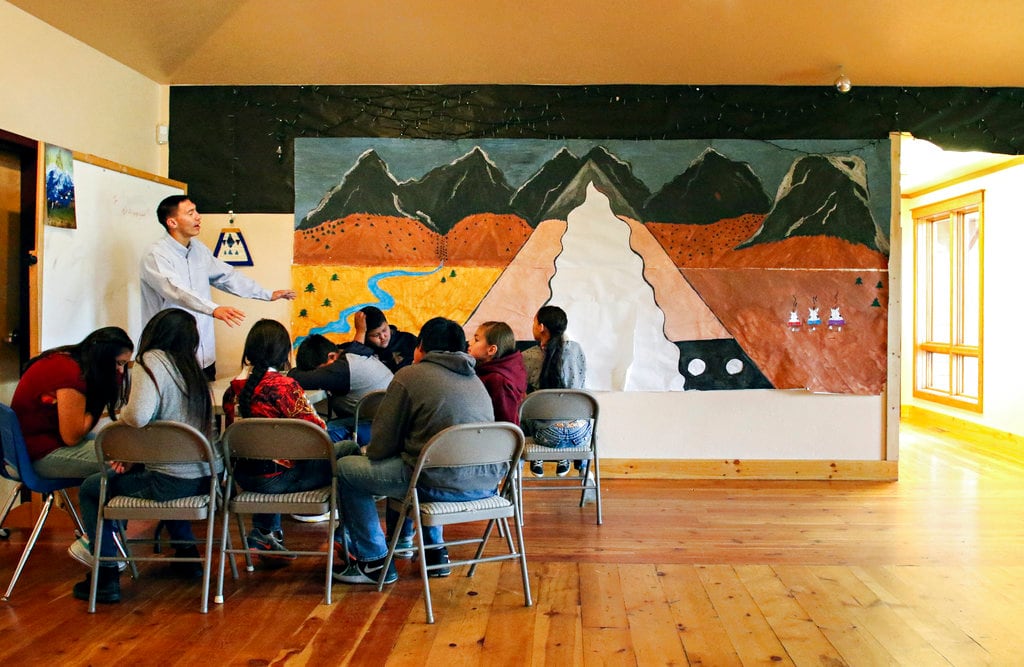
“Language is the vehicle that drives our culture. It’s what makes us us. But people became so ashamed of their identity that if we weren’t creating new speakers today, the culture and the language would go away. Culturally, we’ve reached a period now where it’s OK to be native again. It’s cool to be native. I would say that there’s a real reawakening.”
When DesRosier first landed at Cuts Wood School in the third grade, the notion of Blackfeet learning Blackfoot was still a novel concept, and the curriculum hadn’t yet expanded to accommodate his age group. So, he began skipping classes at the public school in order to attend Cuts Wood covertly.
Finally, Darren Kipp broadened the program to its current format, an accredited full-time K-8 institution that stands out as a model for native language schools across the country.
But DesRosier recalls that wasn’t always the case. The notion of revitalizing a language that had been successfully demonized was met with hostility after a century of conditioning by public and religious institutions.
“I remember when my brother and I started learning the language, my mom asked my grandma why she hadn’t taught them Blackfoot,” he said. “She told her, ‘It’s because we loved you.’ So my mom learned the language right along with us.”
Leading a visitor on the tour of the Cuts Wood School, Darren Kipp likens it to a temple housing something sacred — the east-facing doors reveal a traditional Native pedagogy relating to the placement of tipi poles, pointing in the direction of the rising sun. Vaulted ceilings and expansive skylights illuminate the rooms with natural light, and traditional Blackfeet games allow the students to play outdoors while still engaging their culture, performing the same rituals as their ancestors.
“Your language is your identity,” Kipp said. “It’s so empowering to learn your language. And when you put your language in a beautiful building with cutting-edge resources, you put your language in a place of prestige.”
In 2014, DesRosier brought the Cuts Wood model to Missoula when he and a group of UM students formed the Sacred Roots Language Society, an effort to raise awareness about endangered indigenous languages and their direct association with Native American culture.
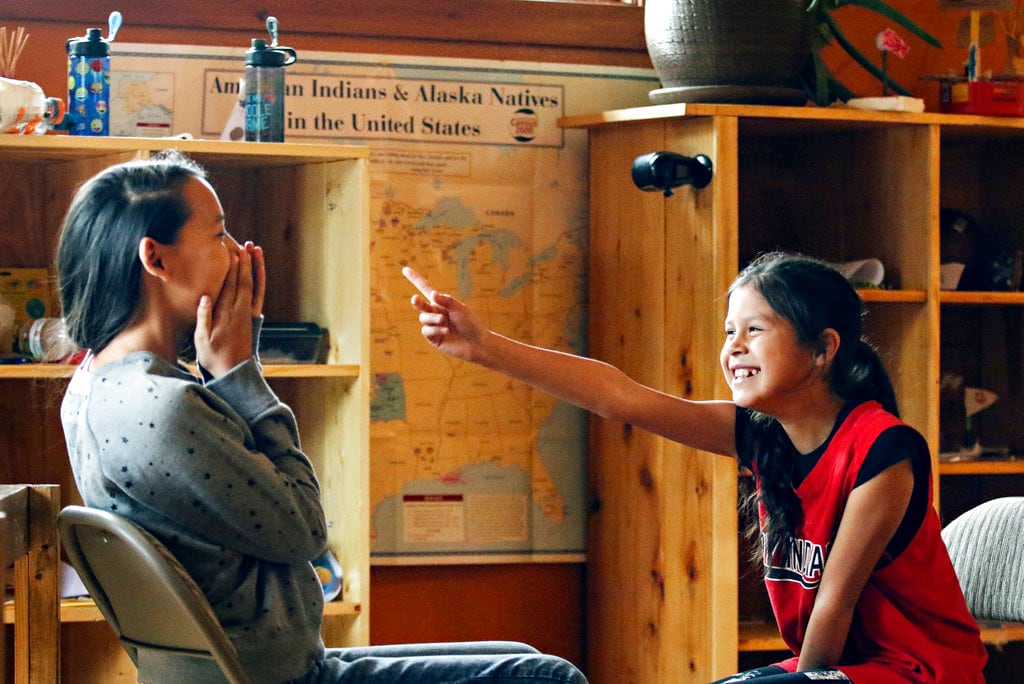
“It is the belief of our society that without language, we will lose our culture,” he said.
He teaches a native language class once a week at UM, and has started offering an online course to a group of Yale students.
But it’s at Cuts Wood where language and culture merge into the strongest sense of identity.
“We produce speakers and cultural leaders in here,” said Diana Burd, 75, a Cuts Wood teacher since the school’s inception, and DesRosier’s former instructor, whom he affectionately calls “Miss Piksi,” the Blackfoot word for bird. “Their whole personality changes once they understand who they are and where they come from.”
Although Cuts Wood critics were initially skeptical of whether students would seamlessly transition into high school after attending the nonprofit language school, Kipp said it has built a strong tradition of more than adequately preparing young people for the public school system.
Not only do Cuts Wood students speak Blackfoot and English in concert, but they also learn Native Sign Language, which for centuries served as a universal language that united tribes.
“They’re essentially using three languages every day they’re here,” Kipp said.
Another challenge for the institute’s programs is applying an age-old language to modern times and keeping it culturally and socially relevant. Traditional Blackfoot was devoid of words for computers, cell phones and other staples of the time.
In most cases, tribal elders and others are consulted before new words are adopted in the Blackfoot lexicon, DesRosier said, recalling one early case in which a multiple-choice question on a standardized test asked him to identify the safest place to ride his bicycle — the street, a gravel road or a sidewalk.
“I answered gravel road and I got it wrong,” he said. “I lived on a gravel road and we didn’t have any sidewalks.”
Not only has DesRosier joined the ranks of Cuts Wood teachers working to perpetuate Blackfeet heritage, but he’s marshaling resources to defend another critical aspect of Blackfeet identity — the natural landscape where Blackfeet derived much of their spirituality.
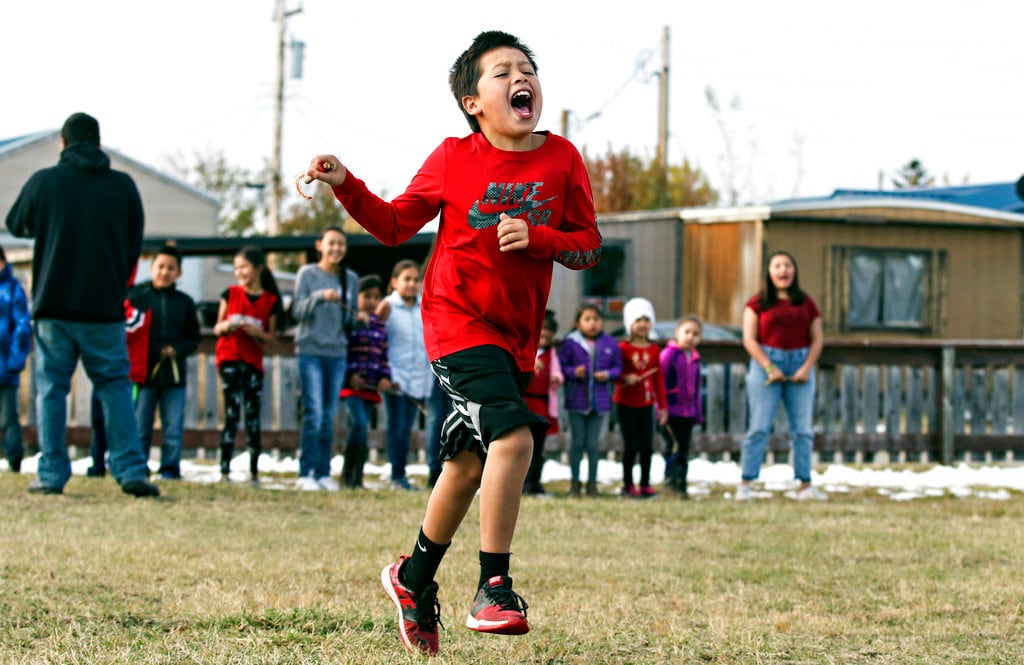
Specifically, he and dozens of other Native American veterans and active-duty members have petitioned U.S. Interior Secretary Ryan Zinke to defend a sacred ancestral homeland known as the Badger-Two Medicine, a 130,000-acre area named for the two rivers that define it.
DesRosier and other tribal members, as well as numerous conservation groups, are seeking to furnish the wild and sacred Badger-Two Medicine with permanent protections from oil and gas drilling. They’re currently calling on the Interior Department to defend the Obama administration’s cancellation of the last remaining oil and gas leases and to protect the area in perpetuity.
“The Badger-Two Medicine is our Vatican,” DesRosier said. “It’s a temple for us, and it remains under attack.”
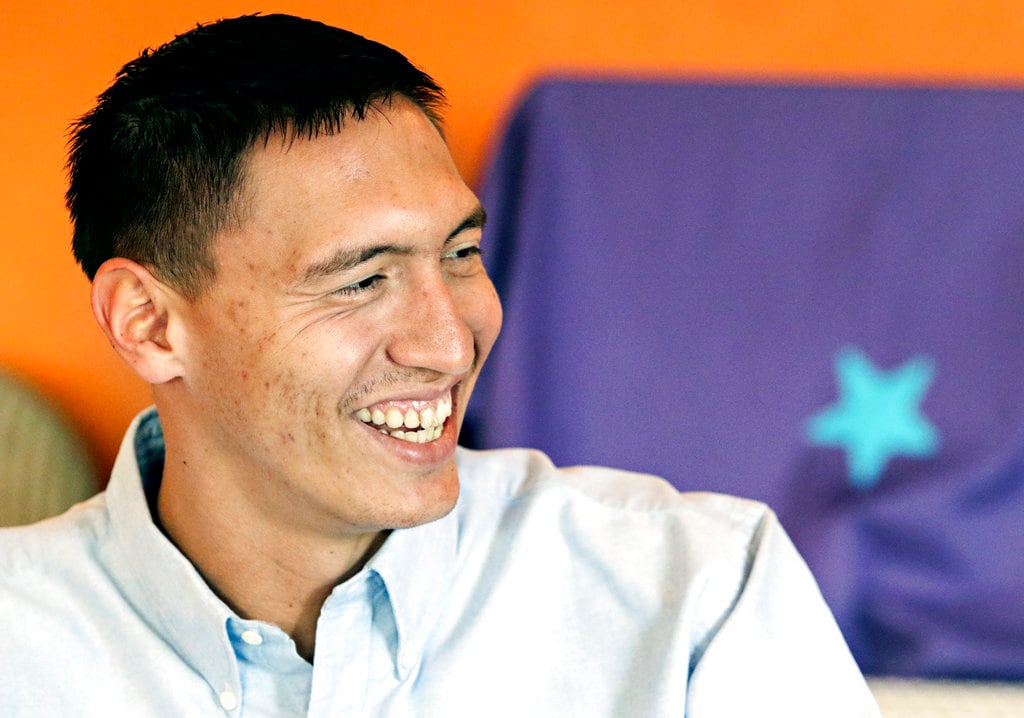
Bounded on the north by Glacier National Park, the east by the Blackfeet Indian Reservation and the south by the Bob Marshall Wilderness Complex, the Badger-Two Medicine comprises an expanse of roadless mountainous river valleys that serve as a powerful source of the Blackfeet tribe’s cultural and religious practices, and is the birthplace of Blackfeet creation stories, as well as a critical ecological corridor.
John Murray, the Blackfeet tribal historic preservation officer, has been at the vanguard of efforts to protect the area for years, and said a renewed interest in Blackfeet culture from members of the tribe’s younger generations gives him greater hope that they will prevail.
“The young people are reviving that cultural spirituality and are moving in a positive direction,” Murray said. “It is a renaissance. It’s the beginning. We can see the re-flowering of our culture. We just need to put more sunshine on it and more water to encourage that growth.”
Information from: Flathead Beacon, http://www.flatheadbeacon.com
